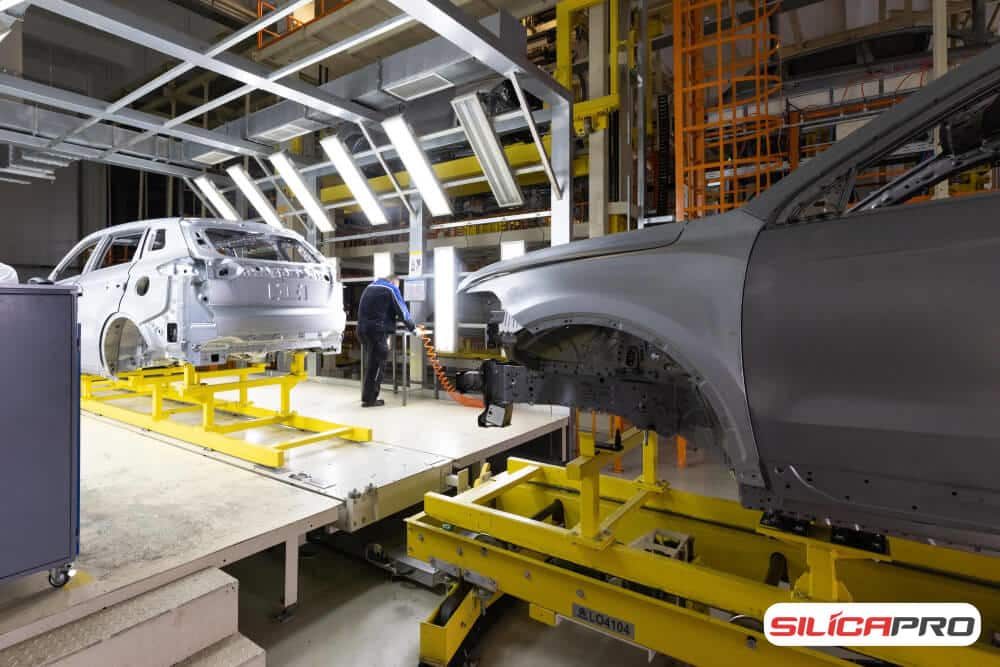
Fiberglass, a composite material made of glass fibers reinforced with resin (typically epoxy), has become a staple in automotive engineering due to its numerous advantages. Its strength, lightweight properties, and versatility contribute to its popularity in vehicle design and construction. So, what are its key benefits and uses in the automotive sector? Let’s explore further.
Contents
10 Benefits of Fiberglass in Auto Engineering
Fiberglass offers a range of benefits that make it ideal for automotive applications:
Lightweight
Fiberglass is significantly lighter than many materials like steel or aluminum, which helps reduce vehicle weight. This weight reduction translates to better fuel efficiency and enhanced performance, as lighter vehicles offer improved acceleration, handling, and braking.
High Strength-to-Weight Ratio
Despite its lightweight nature, fiberglass has a high strength-to-weight ratio, making it durable and robust enough for automotive parts. This strength ensures the structural integrity of vehicle components without compromising weight.
Rust Resistance
Fiberglass is inherently corrosion-resistant, which is beneficial for vehicles exposed to harsh weather or road salt. Unlike metal, fiberglass doesn’t rust, extending the lifespan of vehicle bodies and components.
Design Flexibility
Fiberglass can be molded into complex shapes, allowing for greater freedom in designing aerodynamic, attractive, and functional automotive parts. This design flexibility is especially useful for creating streamlined, visually appealing vehicle shapes.
Vibration Reduction
Fiberglass absorbs and dampens vibrations, resulting in a smoother and more comfortable ride. This property is particularly useful in interior components, helping to reduce cabin noise and improve passenger comfort.
Resistance to Chemicals and Heat
Fiberglass resists various chemicals and can withstand high temperatures, making it suitable for use in engine compartments and areas exposed to heat and potentially corrosive substances.
Easy Repairs and Modifications
Fiberglass parts can often be repaired without expensive welding or specialized equipment. Additionally, fiberglass is easy to modify and customize, allowing for specific aesthetic or functional adjustments.
Thermal and Acoustic Insulation
Fiberglass has excellent thermal and acoustic insulation properties, which help control cabin temperature and reduce external noise, improving comfort for passengers.
Environmental Benefits
Fiberglass is more environmentally friendly than many alternatives as it can be recycled. This reduces the environmental impact of producing and disposing of automotive components.
Cost Savings on Tooling
Fiberglass can be shaped in molds, reducing tooling costs in manufacturing. This benefit is particularly valuable for complex or uniquely shaped components, helping lower production expenses.
While fiberglass offers many advantages, it does have some limitations, such as higher production costs and potential brittleness in extreme impact conditions. Therefore, careful material selection is essential to maximize the benefits of fiberglass in auto engineering.
Uses of Fiberglass in Auto Engineering
Fiberglass is widely used in automotive engineering for various applications, thanks to its strength, flexibility, and lightweight properties. Below are some of its primary uses:
Car Body
Fiberglass is frequently used in car body production, as it’s light, strong, and corrosion-resistant. Fiberglass bodies are popular in racing cars, sports cars, and classic vehicles. They offer a lightweight alternative to metal bodies, improving fuel efficiency and performance, and enabling more flexible, aerodynamic body designs.
Interior Panels
Fiberglass is ideal for manufacturing interior panels like dashboards, door panels, and center consoles. It provides structural integrity and allows for diverse shapes, enhancing the design and functionality of car interiors. Fiberglass is also used in insulation panels and soundproofing materials, enhancing thermal and acoustic insulation within the cabin.
Racing Cars
In racing, fiberglass is highly valued for its lightweight nature and ability to be shaped aerodynamically, boosting vehicle performance. Racing cars often feature fiberglass bodies and components to minimize weight and improve durability.
Specialty Components
Beyond body panels, fiberglass is used in specialty automotive components due to its malleability and high-temperature resistance, which is essential for engine components and other parts exposed to high stress or heat.
Engine Axles and Covers
Fiberglass is a preferred material for components near the engine, such as axles and covers, due to its resistance to heat and chemicals. These components help maintain engine temperature and provide protection against corrosive elements.
Bumpers
Some car bumpers, especially in racing, are made from fiberglass. A quality fiberglass bumper offers substantial protection while remaining lightweight, contributing to better vehicle handling and reduced drag.
Fenders and Overfenders
Fiberglass fenders and overfenders are used to modify the shape and width of a vehicle’s tires. Commonly seen on racing cars, off-road trucks, and custom vehicles, they offer an easy way to enhance both style and functionality.
Fuel Tank
In racing cars, fiberglass fuel tanks provide a lighter alternative to metal tanks, helping improve the vehicle’s power-to-weight ratio and fuel efficiency. This weight reduction can enhance acceleration and overall performance.
Bodywork for Specialty Vehicles
Fiberglass is also used in the bodywork of specialty vehicles like golf carts, ATVs, and small electric vehicles. Its lightweight yet durable properties make it ideal for creating resilient, easy-to-maintain vehicle bodies.
Air Ducting and Intake Systems
In high-performance vehicles, fiberglass air ducts and intake systems direct air efficiently to the engine while minimizing heat absorption. This helps maintain optimal engine performance, particularly in sports and racing cars.
Conclusion

Fiberglass has become a crucial material in the automotive industry, offering significant benefits such as light weight, strength, corrosion resistance, and insulation. From car bodies and interior panels to engine covers and specialty components, fiberglass enhances vehicle performance, efficiency, and aesthetics. As automotive technology continues to evolve, the versatility and eco-friendliness of fiberglass will ensure its continued role in innovative vehicle designs.
